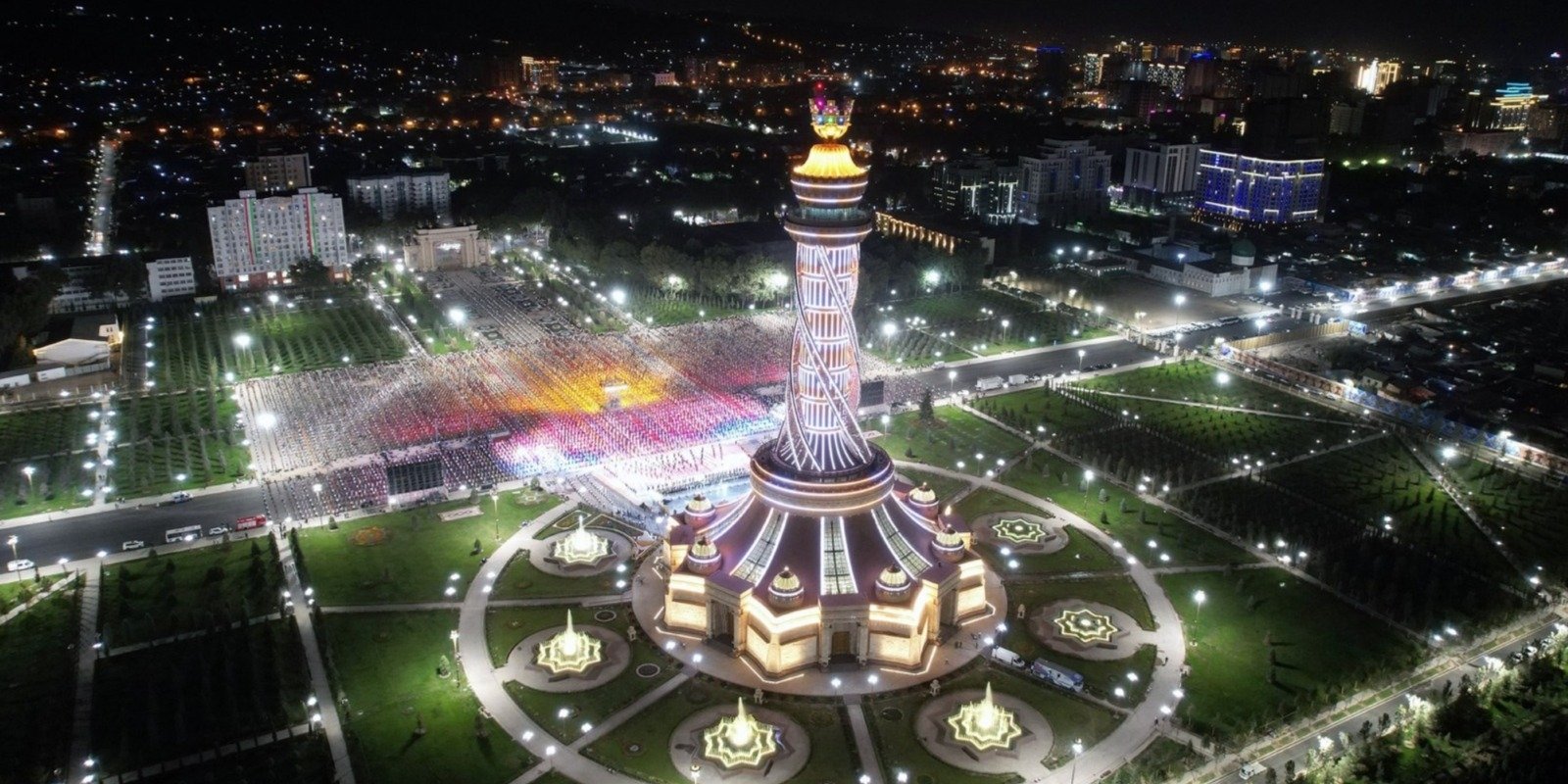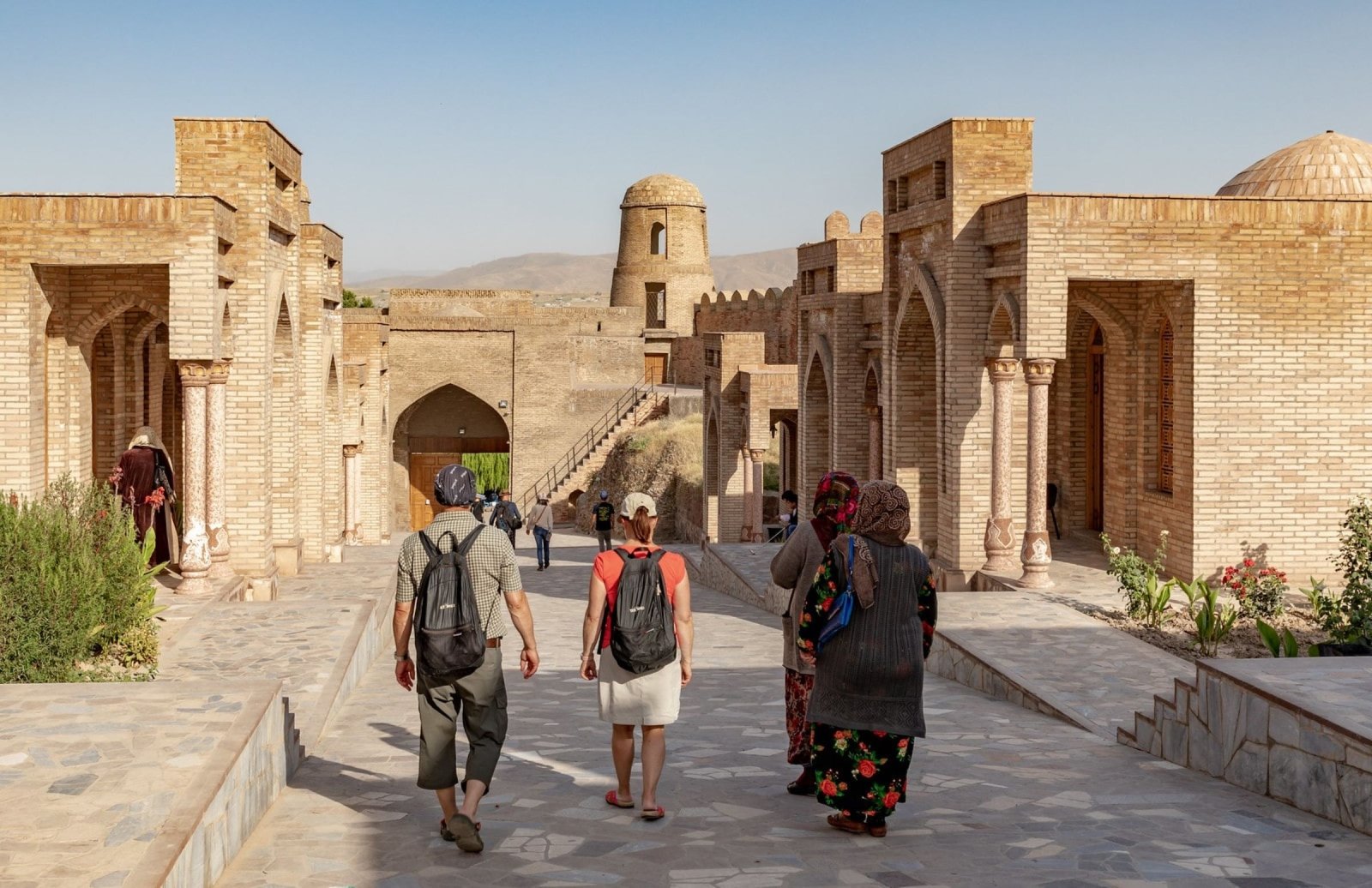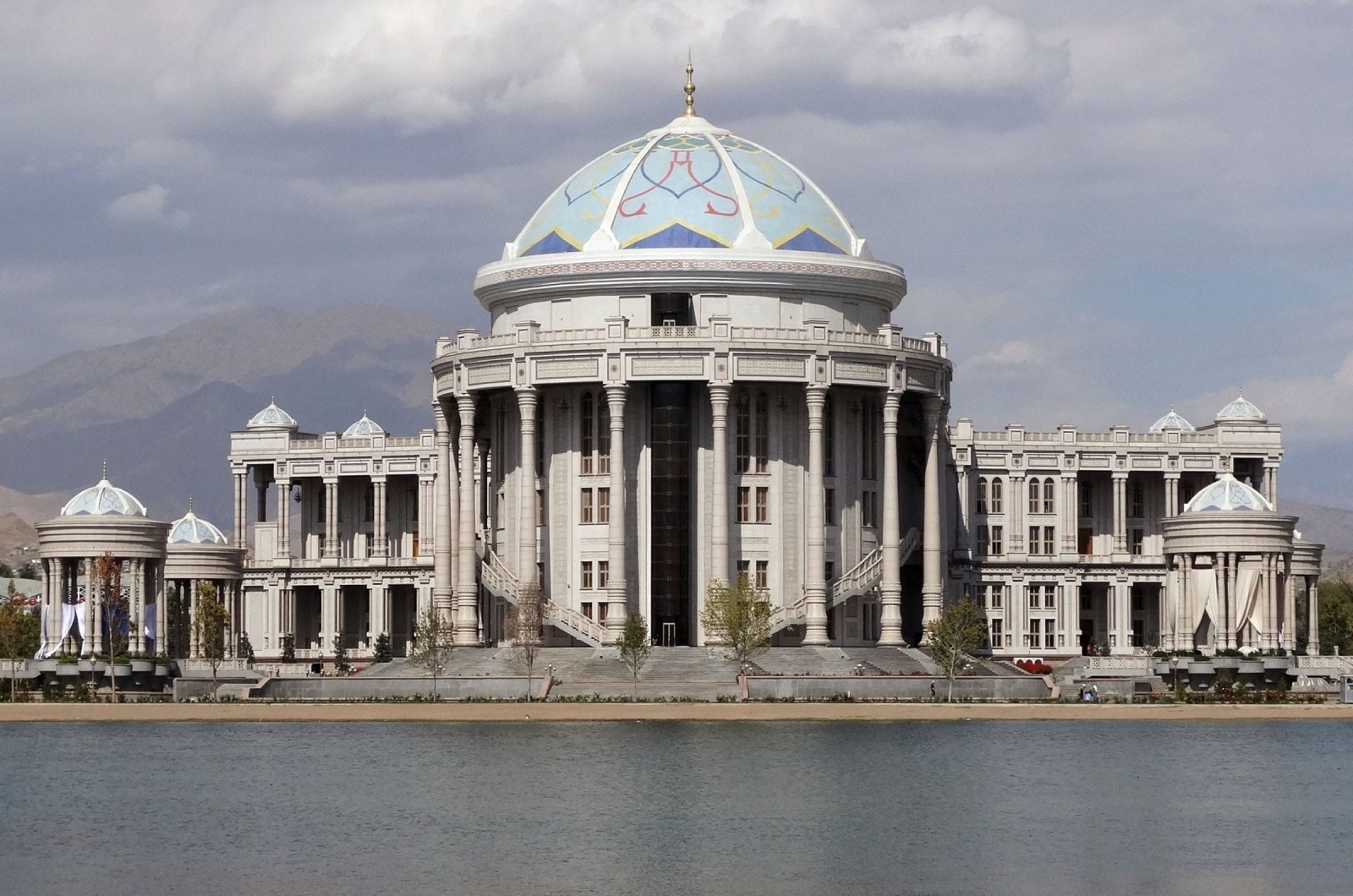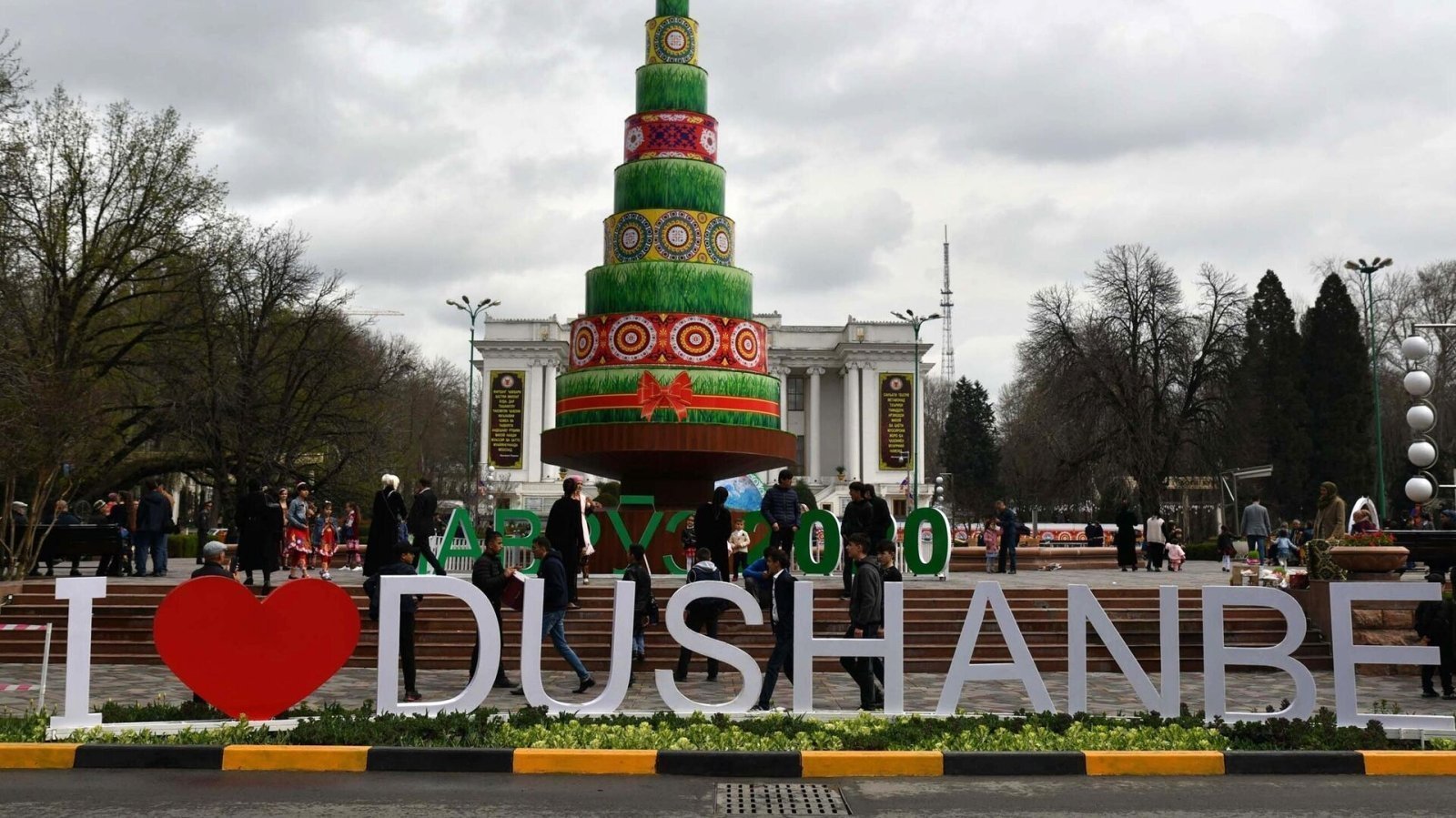Dushanbe excursion
-
Duration - 9 hours
-
Guide optionsEnglish
-
Cancellation PolicyStrict
Overview
Dushanbe excursion - Modern Dushanbe is a city where you can feel the breath of the fabulous East, and at the same time it is the cultural, economic, and political center of the country. Among the modern monuments there is a monument to the founder of the Tajik state Ismail Somoni.
Highlights
- Dushanbe excursion
- Explore Dushanbe
- Dushanbe, capital of Tajikistan
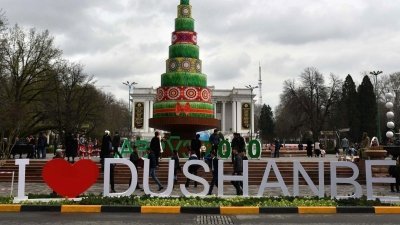
Description
Dushanbe excursion
The capital of Tajikistan, a city of republican significance, the largest scientific, cultural, political, economic, industrial, and administrative center of the country. The highest state authorities of Tajikistan are in Dushanbe, including the residence of the President of the Republic of Tajikistan in the Presidential Palace. The highest flag in the world has been erected in Dushanbe, which is included in the Guinness Book of Records. The population of the city is more than a million people.
The time of the origin of the ancient settlement on the territory of the modern city is not precisely established. During the research conducted on the territory of Dushanbe, various household items of ancient people who lived here at the end of the Stone Age, in the Neolithic era, in the 4-3 millennium BC were discovered, which are currently on display at the National Museum of Antiquities of Tajikistan in the center of the country.
In addition, in the former Putovsky Descent (now the National Museum of Tajikistan), the remains of settlements of the Greco-Bactrian Kingdom (late 3rd century BC) were found, and a settlement of the Kushan period (7-8 centuries) - on the left bank of the Dushanbe-Darya River. The city of Kushan time, according to the assumptions of scientists, was quite significant in size. Traces of his rural district were discovered during the excavations of such early medieval settlements as Arki Mir (the territory of the botanical garden), Ispechaktepa (the residential area of Ispechak), Teppai Iskandar, the settlement of Shishi Khona.
"Monday" is the translated name of the capital of Tajikistan, ancient Dushanbe. From 1929 to 1961, the city was called Stalinabad, in honor of the leader of the Soviet Union, I.V. Stalin. At the beginning of the 17th century, a village appeared at the crossroads of Asian roads, where a bazaar was held on Mondays. As time passed, the village grew and soon turned into a district center, whose bustling markets were full of people and goods not only one day a week - and the name remained. The first written mention of Dushanbe occurs at the end of 1676.
Modern Dushanbe is a city where you can feel the breath of the fabulous East, and at the same time it is the cultural, economic, and political center of the country.
Among the modern monuments there is a monument to the founder of the Tajik state Ismail Somoni, a statue of the poet Rudaki, the founder of Tajik-Persian classical poetry. In Rudaki Park you can see wonderful fountains, beautifully illuminated at night. Islamic architecture is represented by the mosque and madrasah of Haji Yakub.
Dushanbe was literally transformed during the years of independence. Over the past 30 years, the buildings of the National Library, the National Museum of Tajikistan, the cultural complex "Kohi Navruz", "Kohi Somon", "Dushanbe Plaza" and a number of other objects have been built in our capital, which have become the pride of the residents of the capital.
Today, guests of the capital of Tajikistan are waiting for modern hotels "Serena", "Hyatt Regency Dushanbe", "Sheraton", "Tajikistan", etc.
Guests of our capital can visit various museums of the city: the National Museum of Tajikistan, the National Museum of Antiquities of Tajikistan, the Museum of Ethnography, the Museum of Musical Instruments named after G. Zavkibekov, the House Museum of S. Aini, the House Museum of M. Tursunzade, etc.
Every year, the number of tourists wishing to see Tajikistan is increasing. In 2021 more than 450 thousand people visited the country. If earlier the main flow was from the CIS countries, now most of the travelers are residents of far abroad.
What's included
- Inclusions:
- - Transportation on process of the tour
- – meals, lunch, STD
- – guide, English speaking
- – entrance fees for visiting places
- – tourist tax
- Exclusions:
- – personal costs
- – alcohol drinks, food etc.
Itinerary
- Visited Places:
- Ismoili Somoni Monument
- National Library of Tajikistan
- Rudaki Park
- Flagpole
- National Museum of Tajikistan
- Navruz Palace
- Monument Istiklol
- Botanical Garden
09:00 - Tourists will be picked up from the staying hotel (in Dushanbe); however walking is recommended
Visiting places: Memorial complex of Ismoil Somoni – National Library - Nation Palace – Park Rudaki – State Flag square – National Museum - Tajikistan National Museum of Antiquities
Ismoil Somoni complex
Our tour begins with a visit to the Ismoil Somoni complex. In this complex, there is a monument of Ismoil Somoni and Dusti Square. The monument of Ismoil Somoni constructed in honor of the founder of the statehood of the Tajik nation Ismail Somoni. I. Somoni was the head of the Samanids State in the VIII-IX century. Monument height is 11.5 meters; arch height of 40 meters is a symbol of the Eastern state.
National Library
The National Library - located in Dushanbe, Tajikistan is the main library of the country, specializing in preserving cultural heritage of the peoples of the Republic of Tajikistan. While the original library state library in Dushanbe was founded in 1933 and named after Persian-Tajik author Ferdowsi, the new national library building opened in March, 2012 alongside its new official name. The new nine-story building features 15 reading halls as well as over 20 departments.
Flagpole
Next object, which we will visit, is the Rudaki Park and Flagpole. The STATE FLAG SQUARE is located in the center of Dushanbe, to the left of the Nation Palace. This Flagpole entered in the Guinness Book of records as the Highest Flagpole in the world. The height of the flagpole is 165 meters, area 1800 m2, width 30 meters and length 60 meters.
National Museum
NATIONAL MUSEUM — located in the center of Dushanbe. The Museum consists of 22 large and small exhibition halls — departments of nature, antiquity and the middle ages, modern history, fine and applied arts. The exposition area of the National Museum of Tajikistan is 15 thousand m2
National Museum of Antiquities
Tajikistan National Museum of Antiquities - was established in 1934 on the basis of the Exhibition of Achievements of the National Economy and Expeditionary Research of the Tajik Base of the USSR Academy of Sciences. Then the museum had only 530 exhibits. The museum collection contains unique finds, such as the preserved artifact of the "Queen of Sarazm" in Sarazm, Sughd region, near the city of Penjikent[3] and a twelve-meter figure of Buddha, found by archaeologists in 1961 in the town of Ajina-Tepa in southern Tajikistan, Khatlon region, near the city Kurgan-Tyube and other items that have been awarded the status of a nominee for the World Heritage Site by the international organization UNESCO.
13:00 - Lunch
Visiting places: National Gerb Square - Navruzgoh Park - Kokhi (Palace) Navruz – Eram Park – Istiqlol (Independence) Monument and Square – observation deck Istiqlol
Kokhi (Palace) Navruz
KOKHI (PALACE) NAVRUZ — is a new building of 12 unusual halls, each of which is made in its own special national style. It is ready to receive up to 3200 guests at the same time. All the halls of the palace are decorated by local craftsmen: there are wood carvings, Florentine mosaics made from local semi-precious stones, mosaics of colored mirrors, and painted ceilings. On the walls there are scenes from ancient legends, on the ceiling there are wood patterns made in the old style. Navruz Palace impresses with its splendor and modern luxury - it is a representative palace in which important political events of the country and international meetings take place. It was within these walls that the 14th SCO summit took place.
Eram Park
This Park located in the Northern part of Dushanbe. The garden area reaches 40 hectares; the main entrance to the garden is start from the East. The alley goes to the glass greenhouse, where the alleys and paths of the Botanical garden originate. Parker was establish in Dushanbe in mid-1933
IMAM A’ZAM MOSQUE
As an honor to the founder and leader of the tolerant Hanafi teachings of Abu Hanifa Numon ibn Sobit, and dedicated to the celebration of his 1310th anniversary on October 5, 2009, a stone was laid in the foundation for the construction of this largest mosque in the Republic of Tajikistan. The mosque was built on 12 hectares of which the building of the mosque is located on 3 hectares and has 3 large entrances. The mosque can accommodate 133,000 worshipers simultaneously, of which 43,000 worshipers – inside the mosque and the rest – around it.
Istiqlol (Independence) Monument and Square
The Istiqlol-Independence Monument and Istiqlol Square were opened on September 8, 2022 with the participation of the Leader of the Nation, the President of the Republic of Tajikistan, Emomali Rahmon, in honor of the 31st anniversary of the State Independence of the Republic of Tajikistan. The 121-meter height of the Istiqlol complex is symbolic, that is, the lower part of the 30–meter complex is a symbol of the 30th anniversary of State independence, and the upper part - 91 meters – represents the independence in 1991 of the last centuries. The total area of the symbolic complex "Istiqlol" is 11900 square meters, the area of the object under construction is 4761 square meters. In the upper part of the complex there is an 8-meter crown made of titanium. In the symbol of Independence, the crown embodies the symbol of statehood, independence, state property and civilization, knowledge of the history of the ancient Tajik people. The base of the complex is an octagonal pyramid and consists of 7 entrances. When drawing up a project with the symbol "Crown", the designer relied as a basis on the symbol "Tree of Life", which represents and embodies broad ideas
17:00 - end of the tour
Frequently Asked Questions
How much time does the Dushanbe excursion take?
Dushanbe excursion duration is 9 hours.
Book Dushanbe excursion now just with Booking Deposit on TripsPointHow many days in advance I must book Dushanbe excursion?
You can book Dushanbe excursion at least in 2 days. Check availability calendar in "Book Now" form to see currently available dates.
Book Dushanbe excursion now just with Booking Deposit on TripsPointtraveler reviews
